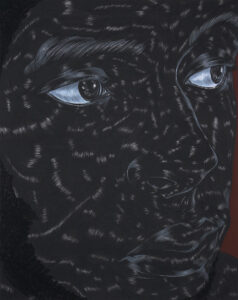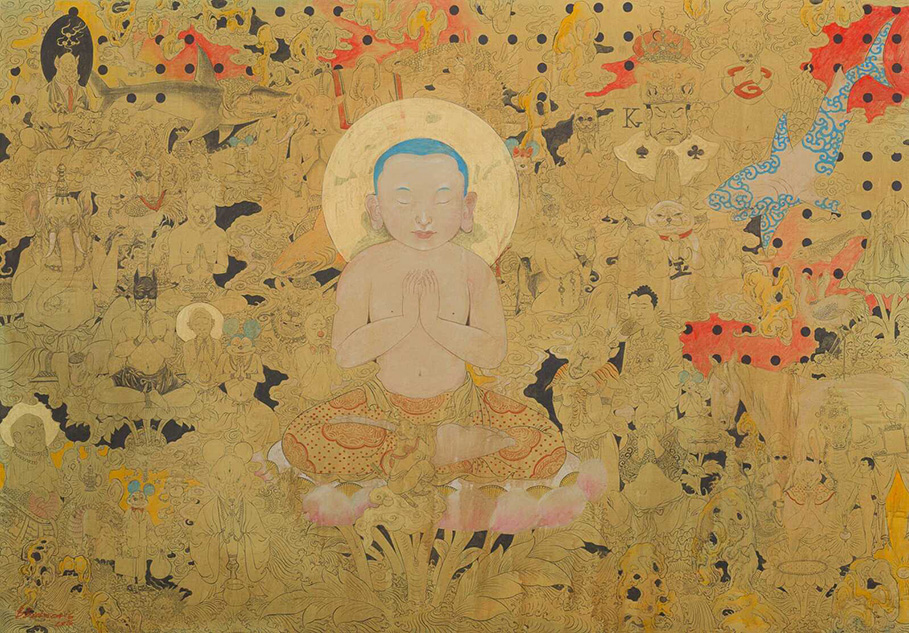Little Buddha (2016)
The practice of Baatarzorig Batjargal takes inspiration from the traditions of Mongol Zurag painting, which emerged in the early 20thCentury during the period of Mongolian independence. Rather than repeat these historical gestures, however, the artist reworks formal elements that characterize the Zurag painting, such as the performative expressions of the figures depicted and the highly decorative costumes and patterns, to communicate contemporary topics such as the rise of global capitalism and the relevance of spirituality.
In Little Buddha, the artist revisits the classical iconography of a cross-legged Buddha seated in a Lotus position, positioned at the center of the painting. Surrounding Buddha, however, are an assortment of figures also seated in the same position, such as a Mickey mouse, a muscular man wearing a Batman-like mask, and another man wearing a collar with Club and Spades symbols. The artist thus adds a layer of flippant humor to an otherwise symbolic gesture of meditation, questioning the authority of religious traditions in the present moment.





